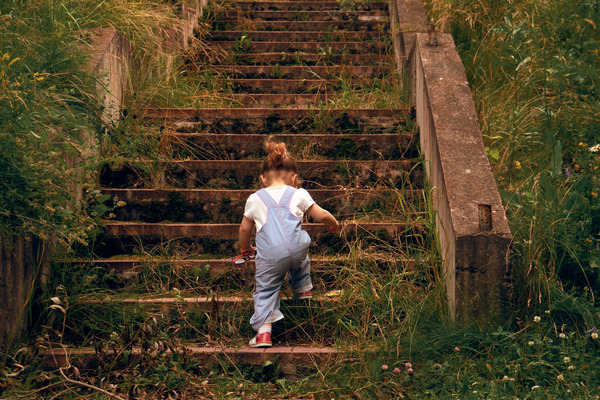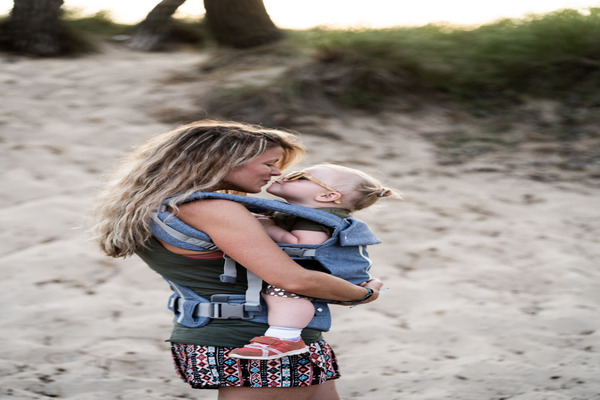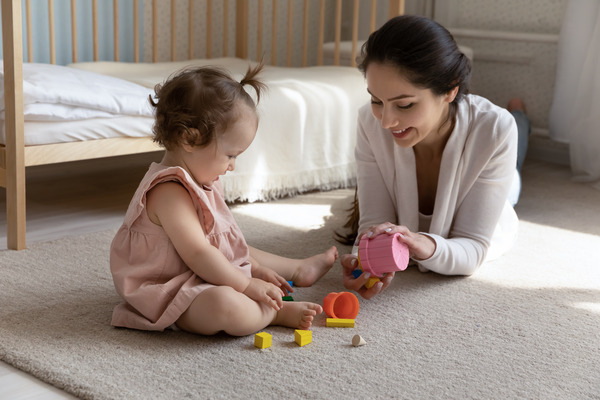Shows of affection are a key element for the development of boys and girls, but… What happens if they are not received? Come in and find out!
He keen It plays a primary role in both the emotional and cognitive development of children and, in fact, the relationship between the child and their caregivers is one of the most important relationships throughout development. However, we can ask ourselves what happens to those children who have not received adequate care and we can come to the conclusion that they would have various difficulties in different areas. In fact, one of the consequences of this situation is the reactive attachment disorder which, as its name suggests, is a disorder that mainly affects attachment.
If you want to know what is attachment what the disorder is about, its symptoms and its causes, keep reading to find out.
What is attachment?
In order to understand what this disorder is about, it is first important to understand what is attachment since it is the main area affected in this problem. When we think about attachment we can associate it with an emotional bond. In fact, throughout our life experience, we can have links with many people, with couples, with friends, etc. However, although they have a point of union and that is that the other links depend on attachment, they are not about the same thing.
He attachment It is characterized by a set of competencies that allow a certain person to have the necessary proximity with another who has less capabilities to be able to face the demands of the outside. In this sense, attachment is a necessity for all babies since it is what allows them to develop both physically and emotionally. Therefore, attachment is always a dependency relationship since the baby needs a caregiver in order to develop and, therefore, it is only with the person who cares for it, unlike the bond. In relation to this aspect, the child himself/herself develops a set of behaviors that aim to attract the attention of the main attachment figure in order to be able to cover his/her basic needs. In fact, the attachment It is an evolutionary mechanism that has been maintained because it is the best way to increase the probability of survival of the human species, that is, these behaviors carried out by the baby respond to a biological function. When the main caregiver cannot attend to the baby’s basic needs, this is when problems develop. attachment disorders like, for example, the reactive attachment disorder

What is reactive attachment disorder?
He reactive attachment disorder (also called reactive attachment disorder Or simply reactive attachment ) is part of a group of disorders called trauma- and stressor-related disorders. This same category also includes post-traumatic stress disorder, acute stress disorder, disinhibited social relationship disorder, and adjustment disorders. All of them have a common characteristic and that is that they appear as a consequence of the adverse reaction to traumatic or very stressful experiences for the person.
He reactive attachment disorder It is only a disorder that occurs in childhood, so it is only diagnosed in children with a minimum developmental age of 9 months. The main characteristic of this is that there is an absence in the attachment behaviors or, they are very poorly developed. This means that when a child with this disorder has a problem (falls, gets hurt, gets lost, etc.), they do not seek help from a caregiver as a child without this disorder would. Given the essential function of attachment in cognitive and emotional development, it is common for this problem to be accompanied by developmental delays, especially in cognition and language, as well as emotional disorders
Symptoms of reactive attachment disorder:
According to the DSM-5 (Diagnostic and Statistical Manual of Mental Disorders), the symptoms that occur in the reactive attachment disorder They are mainly the following:
- The boy or girl exhibits behavior inhibited towards their caregivers, that is, their emotions and behavior is withdrawn This withdrawal can be observed when the child feels discomfort, fear or pain and does not seek or allow himself or herself to be consoled by the caregiver. In fact, he may seem fearful in the presence of her caregivers and calms down when he is alone.
- Inhibition affects both the social and emotional spheres and is not limited only to the bond among caregivers, that is, they show difficulties in reacting to their entire social environment, manifesting episodes of sadness, irritability and fear that occur in situations that are not threatening. All of this translates into little interest in interacting with others as well as disinterest in attempts at interaction by others (they do not look at the other when spoken to, they do not smile, etc.).
- Obvious symptoms can be seen before 5 years of age, but for diagnosis the child must have a developmental age of at least 9 months.
Sometimes, the lack of reciprocity and the lack of affective expression can cause reactive attachment disorder to be confused with autism spectrum disorder. However, the first stands out for having a abandonment story social that does not normally occur in people with autism spectrum disorder. On the other hand, another of the characteristics that differentiate it are restricted interests and repetitive behaviors, symptoms typical of autism spectrum disorder but not of reactive attachment disorder

Causes of reactive attachment:
The main cause of this disorder is mainly not having received adequate care in the first years of life. In fact, in the DSM-5 (Diagnostic and Statistical Manual of Mental Disorders), the diagnostic requirement is established as having experienced during early childhood an extreme pattern of insufficient care that can be manifested by the following situations:
- Negligence: Neglect is a type of abuse in which the physical needs, cognitive needs, or both are not met temporarily or permanently by any member of the family.
- Sudden changes in caregivers: In this case, these are circumstances in which the child undergoes frequent changes in caregivers, such as a change in custody, and it is not possible to establish a stable bond with any figure.
- Education in unusual contexts: Raising in institutions, for example, where there are a large number of children per caregiver reduces the likelihood that the child will be able to establish a selective attachment with a figure.
Boys and girls who have this disorder need multidisciplinary treatment with psychological help in this treatment. The main objective is that the minor can establish a stable bonding with a caring figure to provide you with the necessary care. In this sense, most treatments include family therapy either for a case of negligence or for cases of adopted or foster children.









